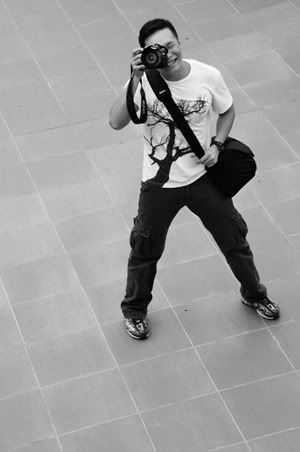 When I signed up for the SAFRA Photo Club Basic Digital Photography course 4 months ago, my aim was just to finally figure out what the dials and functions on my DSLR camera meant. But to my pleasant surprise, I got more than just understanding how to capture picture perfect moments. I learnt how to create them. Not by myself, but through a strange, unseen force that no camera can put in picture.
When I signed up for the SAFRA Photo Club Basic Digital Photography course 4 months ago, my aim was just to finally figure out what the dials and functions on my DSLR camera meant. But to my pleasant surprise, I got more than just understanding how to capture picture perfect moments. I learnt how to create them. Not by myself, but through a strange, unseen force that no camera can put in picture.My moments’ creators are my course mates. Since we completed our 10 classes in late November, we’ve been on many outings, about a dozen to date. That’s a photo outing every week! But we outdid ourselves this time with a 2D1N photography trip to Malacca. This is the first time I’ve been on a ‘holiday’ with the sole purpose of taking photos, and the first time with them. I suggested Malacca because it’s not too far from Singapore. And with its buffet of historical sites, our memory cards are guaranteed to be well-fed. Not to mention forgiving our waistlines because of the exquisite Peranakan cuisine!
Apprehensive at first as I’ve never travelled cross-country with my newfound friends, I was quickly amazed by how easily we bonded. The laughs kept coming just as much as our shutters go a-clicking! From this trip, I discovered the joy of ‘jumping’ shots; reflective sunglasses make for interesting photos; and spontaneity leaves the most lasting memories.
Travel Facts
16 - 17 Jan 2010... The five of us opted to drive up to Malacca from Singapore via the Tuas causeway link. With one rest-stop, our travelling time was about 3 hours.
Accomodation : Equatorial Hotel Melaka (MYR331.20 /room/ night incl. 15% tax)

The hotel is centrally located and very close to the historical sites and Dataran Pahlawan Shopping Mall. It was a pleasant stay and each room came with a MYR88.00 F&B credit. Any unused amount is refunded at 50% as deduction from the room charges.
Exchange rate : S$1.00 = MYR2.41
Travel insurance : S$24.00
Travel expenses : S$70.00
Malacca or Melaka?
Known as The Historical State or Red City of Malaysia, Malacca may confuse the unfamiliar with its name spelt as Melaka. So which is the right name for this 2008 designated UNESCO World Heritage Site? Well, both.
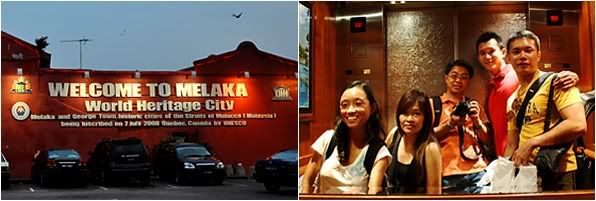
Malacca was used during the colonial occupation, but when the British handed the state back to Malaya (Malaysia today), it was renamed ‘Melaka’. The third smallest state in the Malay Peninsular, Melaka formed part of the early Straits Settlements with Penang and Singapore.
How Melaka Got Its Name
It is believed that a prince, Parameswara, who fled Sumatra founded Melaka in the 1300s. One day, as he was out hunting, his hunting dog cornered a mouse deer. In self defence, the deer pushed the dog into the river. Taking it as a propitious sign of the weak overcoming the strong, the prince decided to name the place on the spot he was sitting. He named it Melaka, after the tree he was resting under.
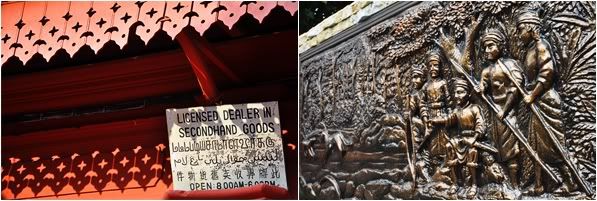
Another version of the story says that Parameswara chose the name 'Malacca' from the Tamil word 'mallakka' which means upside down or on ones back because the dog fell on its back when the deer kicked it.
I wonder what dog the prince used for hunting. Chihuahua?
Click Clique Encounters
Every photographer has his or her style and eye for beauty. My preference is for a documentary approach where I try to take a photo not simply because the subject is beautiful, but to link it to a story I know. I akin it to looking at an attractive potential lifelong mate, but going past the beauty and understanding that person before freezing the great moment (‘signing’ a commitment). Because looks will fail, but the strength of a character endures.
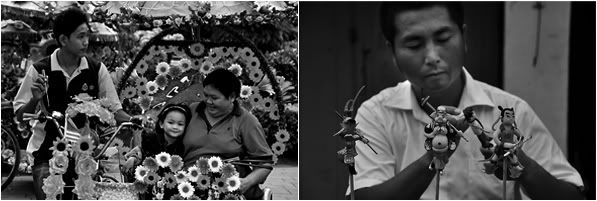
But with a short trip like this one, it’s shoot-and-go. I had much wanted to spend some time in Melaka’s many museums to kaypo about the place. Nevertheless, here’s a record of the state that started as a simple fishing village that was built into a major Southeast Asian trading port in the early days, and becoming a pawn that changed hands from Portuguese, to Dutch, to British rule.
A Famosa – The Famous
Yup, that’s what it meant in Portuguese. It is among the oldest surviving European architectural remains in Asia. The Porta de Santiago, a small gatehouse, is the only remaining part of the fortress still standing. A stairway behind it leads up the hill to St Paul’s Church.
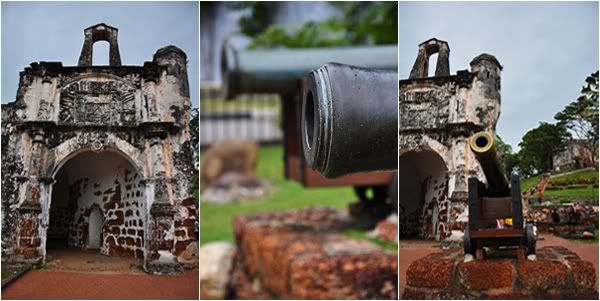
St Paul’s Church
Constructed by the Portuguese in 1521, this church was named "Our Lady of The Hill". When the Dutch took over, they renamed it to St Paul’s Church and occupied the church until their own church, Christ Church, was completed. Old tombstones of noble Portuguese and Dutch nationals can be found in the church’s ruins today.
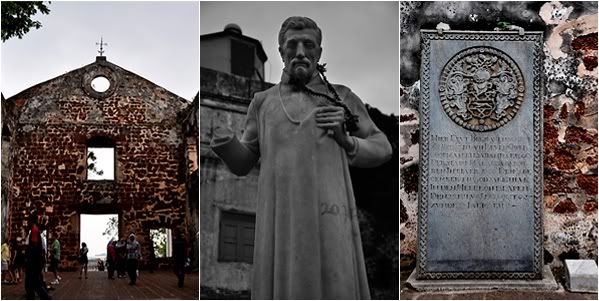
Dutch Square
Also known as the Red Square because all its surrounding buildings are painted red consists of the Stadthuys, Tan Beng Swee Clock Tower, Queen Victoria Fountain, and Christ Church.
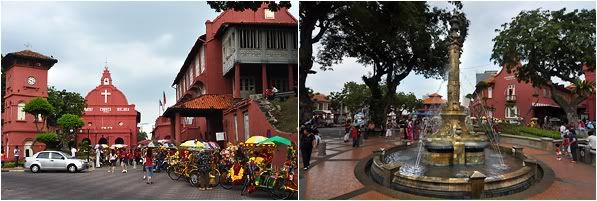
Built in the 1650s, the Stadthuys (which means ‘Town Hall’ in Dutch) served as the office and residence for the Dutch Governor and his deputy. The buildings were painted red when the British took over to ease maintainability. Today, the Stadthuys serves as a Museum of History and Ethnography.
While the Tan Beng Swee Clock Tower looks Dutch, it is not. It was built in 1886 in honour of the so-named tycoon. It is commonly referred to as the Red Clock Tower. Opposite the clock tower, there’s an Indian chendol stall by the Melaka River. A friend told me it’s not to be missed, but I would say save your stomach space.

The other prominent heritage ornament here is the Queen Victoria Fountain. It was erected in 1901 by the British to commemorate the Diamond Jubilee. But perhaps the most iconic building of them all is Christ Church. Built by the Dutch in 1753, it is the oldest Protestant church in Malaysia. This is a quintessential proof of having been to Melaka.
With so many historic building gathered in one place, the Red Square seems the perfect place to start exploring Melaka. However, I would recommend that you start from A Famosa as that brings you nicely across St Paul’s Church to the Red Square, and crossing a road junction, you’ll reach Jonker Street.
If you started at the Red Square, to your right is Jonker Street, and to your left is St Paul’s Church and A Famosa… you’ll be stuck with a dilemma.
Jonker Street / Walk
This is an absolutely jolly street lined as much with antique shops as it is with old heritage houses. There’re quite a few restaurants here selling the famous Hainanese Chicken Rice Ball dish and in the evening, the street turns into a night market selling all sorts of knick knacks and goodies.
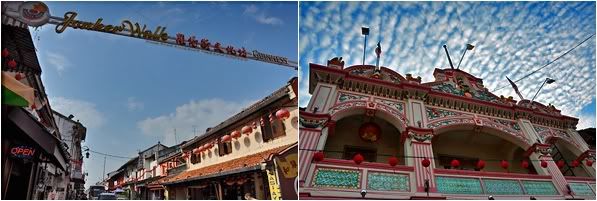
We went to Famosa Chicken Rice Ball restaurant to try the dish. The dish, not the restaurant, came up in a few friends’ recommendations when I mentioned that I’m visiting Melaka so I assumed it must be good. Wrong. It is no different than the chicken rice in Singapore except that the rice is made into balls the size of ping pongs. The ball rice is tasteless, has a hard crust, and nothing to shout about except for its novelty in shape.
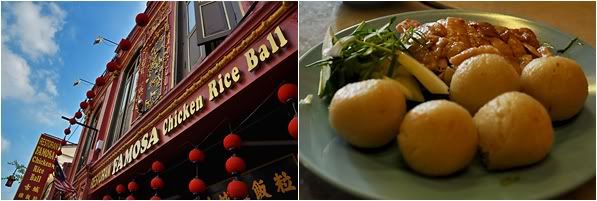
The dish was a let-down, but the restaurant that we had in it made up for it. Famosa Chicken Rice Ball restaurant is very interestingly designed and modeled after the Imperial Palace in China. Two thumbs-up for the elaborate décor within a classic Chinese house of the olden days.
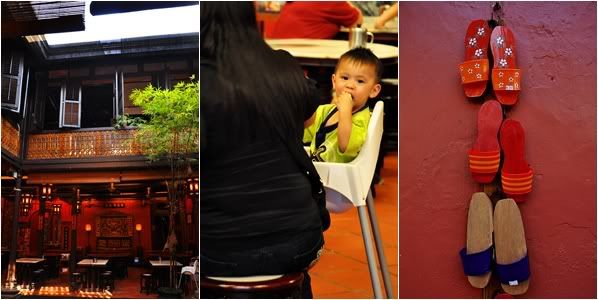
Peranakan Food
On the subject of food, not to be missed in the Peranakan cuisine there. I don’t know if it is right to call Melaka the birthplace of the Peranakan culture, but it does seem that the Straits-born Chinese proliferated here although the Baba-Nyonyas’ ancestry can be traced to inter-marriages between Chinese and Malays in Malaysia and Indonesia around the 1500s.
As a result, the food is a delightful blend of Southern Chinese and Malay culinary traditions, while their cultural style exploded in a myriad of colors and yielded some of the most distinctive fashion in costume and home decoration.
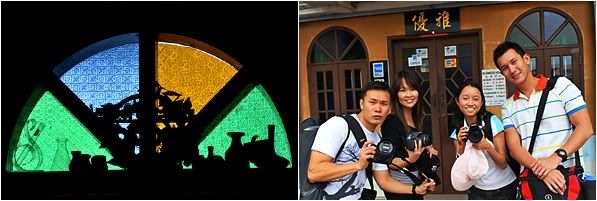
We had no idea which Peranakan restaurant to eat but we stumbled upon an eatery called Makko. The place was packed and we were told it was fully booked. Wow! So we wandered along Taman Melaka Raya and eventually had our lunch at a restaurant translated named 优雅 (translated as ‘Elegance’ or Indah Sayang in Malay).
The food is not bad but the attitude of the owner sucked. He came across as being somewhat haughty and impatient. The meal cost about MYR110.00 and the five of us had assam fish, squid fried with petai, chicken rendang, fried egg, steamed lady’s fingers (super yummy!), otah and chendol.
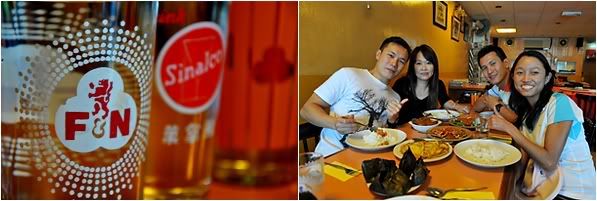
Bukit Cina
Earlier, it was mentioned that Melaka could be considered the origin for the Straits-born Chinese and Bukit Cina, or China Hill, would be ground zero. Diplomatic relations between small Malayan states with large kingdoms such as China and Siam were paramount at a time when these smaller states were like pretty maidens without a husband – everybody wanted to invade, own, and constantly fought over them.
But it was not without benefit to China to maintain good relations as these states (including Singapore) provided economic opportunities for the mainland Chinese to escape the dire situations at their home country. (With China’s emerging status as the new economic superpower, looks like history is repeating itself again.)
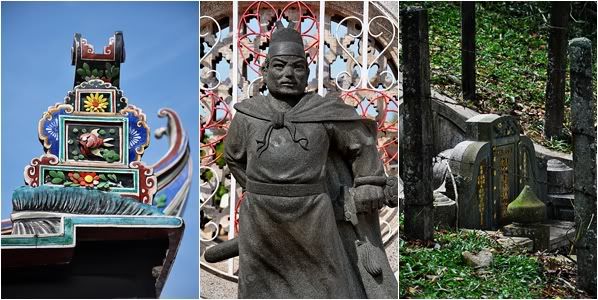
Central to the Chinese history of many East Asian states is Admiral Zheng He (Cheng Ho). A eunuch from the Ming Dynasty, Zheng He acted as the foreign minister of sorts and undertook several ‘Western Ocean’ voyages to give and receive gifts. Zheng He was a Muslim-Chinese.
Prince Parameswara was on good terms with the Admiral. The prince was the first Hindu to convert to Muslim in Melaka. According to legend, as a token of appreciation for Melaka’s tribute to China, the Emperor sent a princess, Hang Li Poh, to marry the Malaccan Sultan. Bukit Cina was a gift from the Sultan for his wife and entourage to settle in. Hang Li Poh brought with her hundreds of men and handmaidens who eventually married the local Malays and gave rise to the Peranakans.
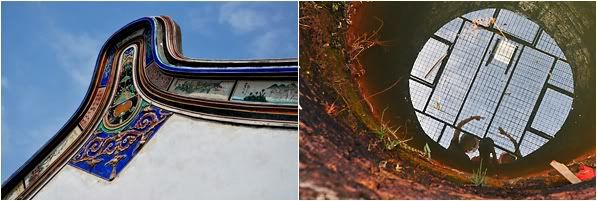
However, the existence of Hang Li Poh is heavily contested because there’s no record of the princess in the Ming Dynasty’s royal lineage. Moreover, true princesses were bestowed with names of two characters such as 常平公主 (Princess Chang Ping) or 永乐咯咯 (Princess Yong Le), therefore Hang Li Po (韩丽宝) couldn’t have been a princess. It was more likely that she was a commoner given the title of princess to marry the sultan.
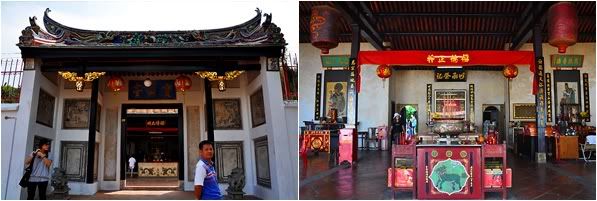
At the foot of Bukit Cina sits the Sam Po Kong Temple. The Chinese temple is not much of an attraction especially since its decorative style is very simple. Even the 剪粘 (chien nian – a popular Chinese decorative style where shards of colorful ceramic were cut and pasted together to depict celestial beings) on its roof were exceedingly modest compared to those found at the clan houses in Penang. It could be because this temple pre-dates many of the more extravagant clan prayer halls.
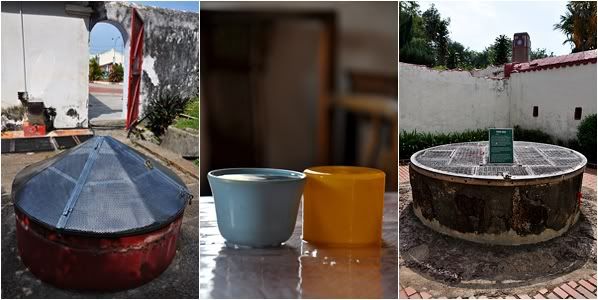
The temple houses two wells – one is the remaining of seven built by Zheng He, and the other is built by Hang Li Poh for her personal. The wells have never been dried even during periods of severe droughts. And it is believed that if one drinks the well water, he/she is bound to return to Melaka again in his/her lifetime. The well had also been poisoned a few times during the period of European in-fighting. One amazing feature of the well water is that it has a higher water tension and can rise above the brim of a cup. If the cup is covered with a piece of cloth and overturned, the well water won’t spill presumably because of its higher mineral contents thus increasing the size of the water molecules.
A small pathway beside the temple leads to a cemetery behind it. With about 12,000 graves, it is believed to be the biggest Chinese graveyard outside of China. Many of the headstones are really old so many semi-buried in centuries of neglect.
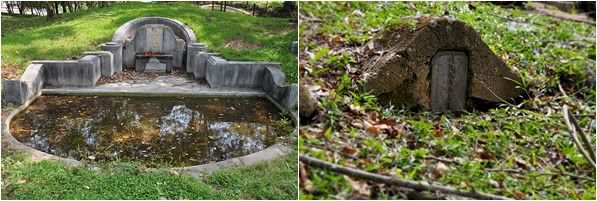
St John’s Fort
We also went to an attraction not so popular with tourists – St John’s Fort. The Fort was originally built as a chapel by the Portuguese but it was eventually renovated into a fort by the Dutch.
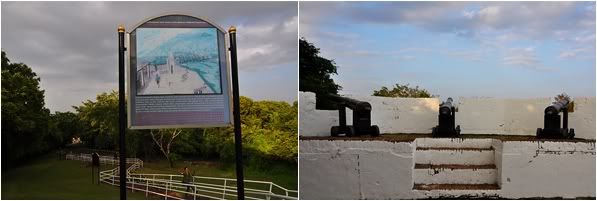
Sitting on top a hill, the fort is unique in the sense that it was built to defend from inland invaders, rather than the sea. Hence, the canons are faced rather awkwardly towards inland. It is located much further away from the cluster of heritage buildings and not really accessible. We were told we could get a different view of Melaka Town other than the usual scenery atop St Paul’s Church.
The view was different alright, but nothing breathtaking. Other than the fort, there’s nothing else to see so we entertained ourselves by experimenting with lots of ‘jumping’ photos. We ended up having a lot of fun there. An exemplary instance of 'it’s not the place, but who you’re with'!
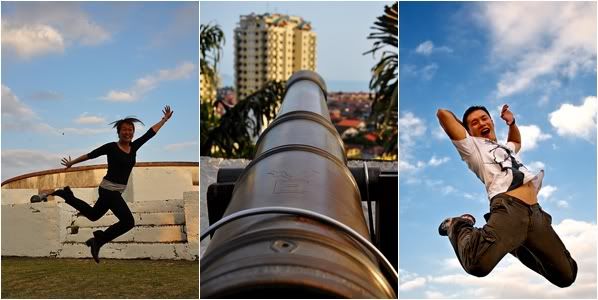
Parting Shots
Some say those who constantly seek adventure is because they lead boring lives. I would say those who don’t seek adventure have yet to live life. And through photography, I’ve been brought to places I won’t normally go and be motivated to do things I otherwise won’t. And it’s great to have a bunch of like-minded people to enjoy it with! Let’s continue to experience each irrecoverable moment and make them live a lifetime…
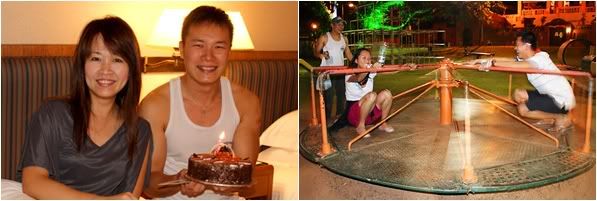
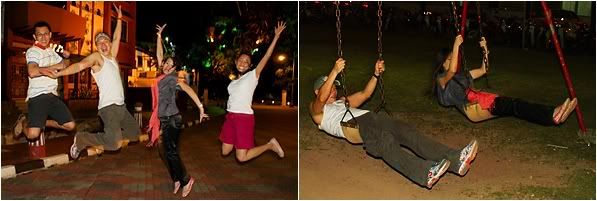
For more photos on Malacca, do pop by my album Melaka : 1st Click Clique Adventure.